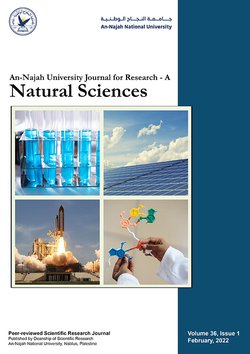Downscaling of Thermal Images Over the Gaza Strip Using the Land Surface Temperature—Spectral Indices Relation: Case Study; Hot, Arid, and Semi-Arid Areas
Authors:
Article info
2022-12-19
2023-02-22
7 - 24
Keywords
- Landsat 8
- urban cool island (UCI)
- land surface temperature (LST)
- spectral indices (SIs)
- thermal sharpening
- DisTrad
Abstract
Many thermal sharpening applications are evaluated in temperate and subtropical climate regions, which are com-monly characterized by the presence of the urban heat island (UHI) phenomenon. However, similar studies are rarely found in hot, arid, and semi-arid climate cities, where an urban cool island (UCI) phenomenon exists. Recent research shows that the spectral characteristics of land covers and their responses to LST are different based on their climatic type. Resultantly, spectral indices (SIs) show different evaluations to be successfully used in sharpen-ing techniques like the DisTrad, to sharpen LST over several land covers, especially in urban areas. The main ob-jectives of this study are; 1)- to evaluate the spatial relationship between LST and a number of most commonly used urban's remote sensing SIs (21 SIs described in table 2) over the Gaza Strip in two land cover scenarios: all land covers "All" and the urban mask “urban”; 2)- to downscale aggregated low-resolution Landsat 8\LST image at 1000 m to a higher resolution of 100 m. Spectral indices and land surface temperature are calculated using the Landsat 8 image of summer 2017. Spatial regression analysis between SIs and LST within the "All" land cover class and at 1000 m resolutions show the best SIs that have the highest correlation (R2) with LST are DBSI (0.66) and ABEI (0.59). While in the "urban" class, the same indices shows also the highest correlation; BAEI (0.57) and DBSI (0.64). Moreover, statistical validation with LST observation at 100m resolution (Landsat 8\LST), DisTrad was found suc-cessful to downscale LST to 100 m resolution over UCI areas using the indices ABEI and DBSI with the highest cor-relation (R2) over the "All" class (0.77 and 0.73 respectively) and over the "urban" mask using DBSI (0.59) and BAEI (0.58)
Essa, W., & Lhissou, R. (2023). Downscaling of Thermal Images Over the Gaza Strip Using the Land Surface Temperature—Spectral Indices Relation: Case Study; Hot, Arid, and Semi-Arid Areas. An-Najah University Journal for Research - A (Natural Sciences), 37(2), 7–24. https://doi.org/10.35552/anujr.a.37.2.2103
[1]W. Essa and R. Lhissou, “Downscaling of Thermal Images Over the Gaza Strip Using the Land Surface Temperature—Spectral Indices Relation: Case Study; Hot, Arid, and Semi-Arid Areas,” An-Najah University Journal for Research - A (Natural Sciences), vol. 37, no. 2, pp. 7–24, Aug. 2023, doi: 10.35552/anujr.a.37.2.2103.
Essa, Wiesam, and Rachid Lhissou. “Downscaling of Thermal Images Over the Gaza Strip Using the Land Surface Temperature—Spectral Indices Relation: Case Study; Hot, Arid, and Semi-Arid Areas.” An-Najah University Journal for Research - A (Natural Sciences), vol. 37, no. 2, Aug. 2023, pp. 7–24. Crossref, https://doi.org/10.35552/anujr.a.37.2.2103.
1.Essa W, Lhissou R. Downscaling of Thermal Images Over the Gaza Strip Using the Land Surface Temperature—Spectral Indices Relation: Case Study; Hot, Arid, and Semi-Arid Areas. An-Najah University Journal for Research - A (Natural Sciences) [Internet]. 2023 Aug;37(2):7–24. Available from: http://dx.doi.org/10.35552/anujr.a.37.2.2103
Essa, Wiesam, and Rachid Lhissou. “Downscaling of Thermal Images Over the Gaza Strip Using the Land Surface Temperature—Spectral Indices Relation: Case Study; Hot, Arid, and Semi-Arid Areas.” An-Najah University Journal for Research - A (Natural Sciences) 37, no. 2 (August 2023): 7–24. https://doi.org/10.35552/anujr.a.37.2.2103.
Downscaling of Thermal Images Over the Gaza Strip Using the Land Surface Temperature—Spectral Indices Relation: Case Study; Hot, Arid, and Semi-Arid Areas
المؤلفون:
معلومات المقال
2022-12-19
2023-02-22
7 - 24
الكلمات الإفتتاحية
- Landsat 8
- urban cool island (UCI)
- land surface temperature (LST)
- spectral indices (SIs)
- thermal sharpening
- DisTrad
الملخص
Many thermal sharpening applications are evaluated in temperate and subtropical climate regions, which are com-monly characterized by the presence of the urban heat island (UHI) phenomenon. However, similar studies are rarely found in hot, arid, and semi-arid climate cities, where an urban cool island (UCI) phenomenon exists. Recent research shows that the spectral characteristics of land covers and their responses to LST are different based on their climatic type. Resultantly, spectral indices (SIs) show different evaluations to be successfully used in sharpen-ing techniques like the DisTrad, to sharpen LST over several land covers, especially in urban areas. The main ob-jectives of this study are; 1)- to evaluate the spatial relationship between LST and a number of most commonly used urban's remote sensing SIs (21 SIs described in table 2) over the Gaza Strip in two land cover scenarios: all land covers "All" and the urban mask “urban”; 2)- to downscale aggregated low-resolution Landsat 8\LST image at 1000 m to a higher resolution of 100 m. Spectral indices and land surface temperature are calculated using the Landsat 8 image of summer 2017. Spatial regression analysis between SIs and LST within the "All" land cover class and at 1000 m resolutions show the best SIs that have the highest correlation (R2) with LST are DBSI (0.66) and ABEI (0.59). While in the "urban" class, the same indices shows also the highest correlation; BAEI (0.57) and DBSI (0.64). Moreover, statistical validation with LST observation at 100m resolution (Landsat 8\LST), DisTrad was found suc-cessful to downscale LST to 100 m resolution over UCI areas using the indices ABEI and DBSI with the highest cor-relation (R2) over the "All" class (0.77 and 0.73 respectively) and over the "urban" mask using DBSI (0.59) and BAEI (0.58)
Essa, W., & Lhissou, R. (2023). Downscaling of Thermal Images Over the Gaza Strip Using the Land Surface Temperature—Spectral Indices Relation: Case Study; Hot, Arid, and Semi-Arid Areas. An-Najah University Journal for Research - A (Natural Sciences), 37(2), 7–24. https://doi.org/10.35552/anujr.a.37.2.2103
[1]W. Essa and R. Lhissou, “Downscaling of Thermal Images Over the Gaza Strip Using the Land Surface Temperature—Spectral Indices Relation: Case Study; Hot, Arid, and Semi-Arid Areas,” An-Najah University Journal for Research - A (Natural Sciences), vol. 37, no. 2, pp. 7–24, Aug. 2023, doi: 10.35552/anujr.a.37.2.2103.
Essa, Wiesam, and Rachid Lhissou. “Downscaling of Thermal Images Over the Gaza Strip Using the Land Surface Temperature—Spectral Indices Relation: Case Study; Hot, Arid, and Semi-Arid Areas.” An-Najah University Journal for Research - A (Natural Sciences), vol. 37, no. 2, Aug. 2023, pp. 7–24. Crossref, https://doi.org/10.35552/anujr.a.37.2.2103.
1.Essa W, Lhissou R. Downscaling of Thermal Images Over the Gaza Strip Using the Land Surface Temperature—Spectral Indices Relation: Case Study; Hot, Arid, and Semi-Arid Areas. An-Najah University Journal for Research - A (Natural Sciences) [Internet]. 2023 Aug;37(2):7–24. Available from: http://dx.doi.org/10.35552/anujr.a.37.2.2103
Essa, Wiesam, and Rachid Lhissou. “Downscaling of Thermal Images Over the Gaza Strip Using the Land Surface Temperature—Spectral Indices Relation: Case Study; Hot, Arid, and Semi-Arid Areas.” An-Najah University Journal for Research - A (Natural Sciences) 37, no. 2 (August 2023): 7–24. https://doi.org/10.35552/anujr.a.37.2.2103.

Since 2019
Cite Score (Scopus): 0.5
Time to First Decision: 3 Days
Submission to Acceptance: 64 Days
Acceptance to Publication: 10 Days
Acceptance Rate: 28%
Call for Papers:
Sustainable Materials and Chemistry for Energy and Environmental Applications
Why should you
Publish With Us?
An-Najah National University
Nablus, Palestine
Nablus, Palestine
- P.O. Box
- 7, 707
- Fax
- (970)(9)2345982
- Tel.
- (970)(9)2345560
- (970)(9)2345113/5/6/7-Ext. 2628
- [email protected]
- EIC
- Prof. Waleed Sweileh
An-Najah University Journal for Research - A (Natural Sciences) by An-Najah University, Nablus, Palestine is licensed under CC BY-NC 4.0

